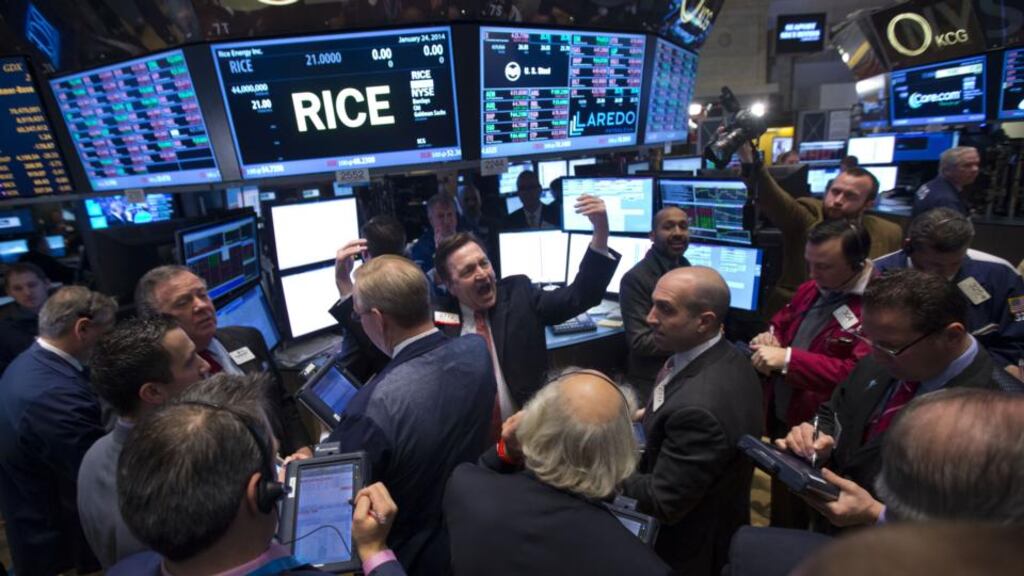The number of professional investors taking above-average risk is close to its highest level ever, according to Merrill Lynch’s latest monthly survey of global fund managers, even though more believe the world’s biggest stock market – the US – to be more overvalued than at any time since 2000.
A net 55 per cent are now overweight equities, despite rising valuations – global markets have surged since the middle of 2012, when a net 4 per cent were underweight stocks. Furthermore, they are underweighting defensive sectors and overweighting financial and tech stocks.
A year ago, managers were most overweight on emerging markets, which went on to become the worst performer of 2013, and loathed Japan – the big winner of the year.
Today, emerging markets (EM) are despised, with exposures near last summer’s lows, prior to a two-month relief rally. EM capitulation is close, says Merrill, adding: “Rarely have bullish growth expectations mixed with such bleak EM weightings.”
Although managers are right to note US markets’ rich valuation, their scepticism, coupled with high cash reserves, means any correction is likely to be “extremely limited”, says Merrill.
More at risk, perhaps, is Europe – the percentage of investors looking to overweight the region is the second-highest in the survey’s history.
With sentiment that bullish, indices are vulnerable in the event of a disappointing earnings season.
US markets are 'overvalued'
Most valuation metrics confirm fund managers' view that US markets are overvalued, as Marketwatch commentator Mark Hulbert noted recently. Hulbert examined six well-known indicators – price-earnings ratio, cyclically adjusted price-earnings ratio, dividend yield, price-sales ratio, price-book ratio, and the so-called Q ratio – and compared the S&P 500's current readings with those that occurred at 35 market tops since 1900. In each case, the index looked pricier today than in the majority of the 35 market tops.
It confirms that US markets are “overweighted, overbelieved and overvalued”, as a recent Ned Davis Research report put it. So when might a double-digit correction ensue?
It is now more than 400 days since such an event, Société Générale's Andrew Lapthorne noted last week – the eighth-longest streak on record. That doesn't "necessarily imply impending doom" – there is "no relationship between time since correction and future returns", Lapthorne says.
Overvalued markets can become more overvalued. The problem, Lapthorne says, is that extended runs can hide the real volatility in equity investing, and lead to higher risk-taking – a process that is already under way, judging by the aforementioned Merrill survey.
Gold-mining loses its lustre
Not all sectors have shared in the positivity. Gold lost 28 per cent in 2013 but that was nothing compared to gold-mining stocks – the world's largest gold-mining company, Barrick Gold Corporation, more than halved in price and at one stage sank to a 21-year low.
That was no isolated case – most gold-mining funds halved last year, and the Philadelphia Gold and Silver Index had, by December, lost almost two-thirds of its value since its 2011 high.
Catching a falling knife is always dangerous – mining stocks looked cheap last year also – but value-minded contrarians are likely to be attracted to the sector, which Bloomberg noted recently had seen book values fall to their lowest levels in at least two decades. The four largest US gold companies are worth less than in 2006, says Deutsche Bank, when gold prices were half today's levels.
Global miners have enjoyed a strong start to 2014, and Citigroup believe it’s no mere relief rally, recently issuing a 12-month bullish outlook on the sector for the first time in three years. “Investor sentiment has hit rock bottom,” says Citi.
"The mining sector has moved through five stages of grief, namely denial, anger, bargaining, depression, and now we think we are in acceptance that the sector has moved into a new norm."
Bearish US insiders selling
US company insiders are selling. According to Reuters' insider transaction ratio, a ratio of one insider buy for every 12 sales is historically bullish; anything above 20:1 is bearish.
Last week, the ratio – best viewed as an intermediate-term rather than a long-term indicator –
exceeded 75:1.
This column has long noted the underperformance of most active fund managers, and how ordinary investors earn a fraction of market returns due to chasing performance and lousy market timing.
Investors are belatedly catching on, especially in the US, where 27 per cent of total assets are now in passive products, compared to 12 per cent in 2003.
However, they're still underperforming – the average index investor earned 2.68 per cent annually over the past 15 years compared to 4.58 per cent for the S&P 500, says financial planner Carl Richards. Why? They let emotions govern their investing and buy high and sell low.
Investors don’t need stock-pickers, but most do need someone to hold their hands.
Emotional investors losing out
This column has long noted the underperformance of most active fund managers, and how ordinary investors earn a fraction of market returns due to chasing performance and lousy market timing.
Investors are belatedly catching on, especially in the US, where 27 per cent of total assets are now in passive products, compared to 12 per cent in 2003.
However, they’re still underperforming – the average index investor earned 2.68 per cent annually over the past 15 years compared to 4.58 per cent for the S&P 500, says financial planner Carl Richards. Why? They let emotions govern their investing and buy high and sell low.
Investors don’t need stock-pickers, but most do need someone to hold their hands.













